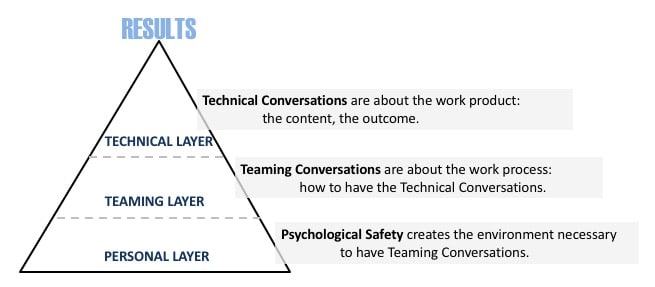
Most of the teams I have been a part of over my career have been a collection of individuals. At the time it felt we were a team. We usually all worked for the same person or we were part of the same project. It seemed we were all focused on the same goals. I now see most often I was working on a team rather than working as a team.
The big difference I see now is people working on a team achieve more together than they can alone. My experiences weren’t bad, the outcome was the sum of our individual contributions. We achieved goals but we didn’t generate results we all felt truly excited about. There are some instances where we surprised ourselves by what we achieved together. On these teams we blended our talents to create something bigger than any of us thought possible.
Teaming is the X factor
The missing ingredient in most of my teams was teaming behavior. Teaming is the set of behaviors a team exhibits that allows them to get the best of each member and put them together to create something much bigger. In most teams, the focus is on technical skills and how we coordinate and execute the technical work. While this is necessary it isn’t enough.
The diagram above is a model of the conversation layers in a team. Most attention in a typical team focuses on the technical layer. These are the conversations about the work product. Highly effective teams go way beyond this and focus on two other layers of critical conversations.
The layers of conversation
The teaming layer describes the conversations about how we collaborate together. These include conversations about the work process, why this team and how we act together. Examples of these are team purpose, trust, composition, process, planning and measurement.
The foundational layer of the model is the personal conversation layer. This is all about how we create an environment that motivates members to give their full contribution. Amy Edmondson has coined the term psychological safety. It is necessary for team members to feel safe to take risks and be vulnerable in front of each other.
The personal layer provides the environment for effective teaming. The teaming layer is necessary to get the most out of our technical conversations, maximizing the teams results. I will blog about these conversation layers in more detail and discuss how to have them.
What conversations are you having in your team? What is the balance between these three layers of conversation? What impact is that having on your team’s results?


